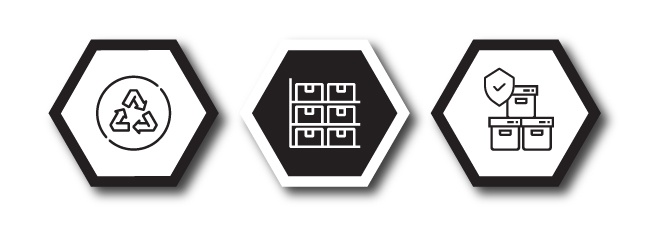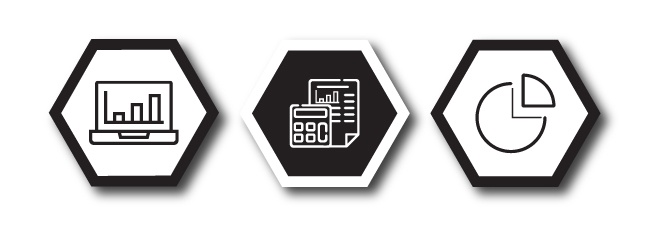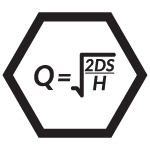
Deciding on the amount of inventory to carry to meet customer demand is not an easy task. After all, any decisions you make will have a direct impact on your bottom line. What makes it even more challenging is that your on-hand inventory consists of many different components, cycle stock included. And you need to have a firm understanding of them all.
That’s because of this simple fact: by understanding something such as cycle stock, you’ll be that much closer to fulfilling inventory demands. Not only that, but you will also be able to do so at the lowest cost possible.

What is cycle stock (and what is its connection to safety stock)?
Up until now, we have mentioned cycle stock a few times without explaining what it is other than suggesting that it’s one of the components of your on-hand inventory.
Also known as working stock, lot size stock or cycle inventory, cycle stock is the “amount of inventory you would expect to go through based on forecasts and historical data”.
In other words, it’s the amount of stock you would expect to cycle through or sell over a period when everything goes according to plan you had set out, and there hasn’t been any unforeseen demand.
Of course, that doesn’t mean that you can’t get it wrong. Customer demand isn’t static; its fluid. That means that you also need to be careful when planning how much inventory to bring into your business.
Let’s say, for example, that you have looked at your historical data and it indicates to you that you need to order X amount of a specific product to fulfil the expected demand for the upcoming season.
However, halfway through the season, you realise that you’re down to your last pallet, and if you order now, you’ll only receive the new stock in a week to two weeks time, which is too long a wait for your customers. They’ll go to your rival to buy what they need.
However, if you were forward-thinking, you would have invested in safety stock, the other component of your on-hand inventory, which works alongside your cycle stock. We’ve already written about safety stock, and you can read that piece here.
That said, there is a reason why we mentioned safety stock. There is a connection between cycle and safety stock that’s worth exploring. By combing the two, you will end up with what is the optimal inventory level for any given SKU, given the current market factors.
What do you need to know before calculating your cycle stock?
Before you can begin to calculate cycle stock, you first need to know and understand your retail business inside out. That’s particularly true if you intend on offering the right amount of product at the right time and price.
To get to that point you need to understand a few aspects. They include but are not limited to, seasonality; demographics; product days stock cover; annual sales of a given product (in units); the cost per unit; the cost of reordering that product, your storage costs, any supplier payment items that you’ve agreed upon, and your suppliers’ lead times.
While many of the above aspects are self-explanatory - seasonality and demographics are just two examples; others are not as straightforward.
With DotActiv’s data-driven assortment optimisation, you can optimise your inventory efficiency
Your product days stock cover is one such aspect. The reason why it’s so important to understand in the context of cycle stock is that it assists you in forecasting how much inventory to order.
Let’s say, for example, that you stock Edible Groceries. The stock cover for it might be 14 days, and hence you would need to consider that when placing an order. If you don’t, you could quite easily find yourself overstocking on perishable goods that would soon expire. What’s more, you end up with capital tied up in products you can’t sell, which also ends up pushing up your storage costs.

How do you calculate cycle stock?
While it might vary from retailer to retailer, when it comes down to calculating cycle stock, the industry norm is to use what is known as the Economic Order Quantity formula. EOQ for short.
The EOQ formula allows you to determine how much stock you need to order of any given product. What’s more, by using such a recipe to calculate your inventory, you stand every change of minimising your cost per order.
It’s important to note that when setting up your EOQ formula, you need to consider these three variables: demand, ordering costs and carrying costs.
With all this included, here is the formula in visual form:

Q = Units/EOQ. D = Annual Demand. S = Ordering Cost Per Order. H = Carrying Cost Per Unit.
Here’s that equation in an example:
Let’s say that you sell Product A at $200 per unit. You manage to sell 125 units a month which gives you a total of 1500 sold units per year. Now you need to determine how much time it took to manufacture this product to determine your cost per order. For the sake of this example, let’s say it takes 3 hours and considering labour costs that’s $50 per hour, which means your cost per order would be $150.
Finally, let’s say your carrying cost, which includes the various costs of holding inventory such as storage is $5.
Here’s the EOQ formula written out with Product A in mind:
EOQ = Square root of [(2 × 1500 × ($150)) ÷ 5]
If you distill that all down, you’ll end up with EOQ = 300. Thus, your ideal order is 300 units for Product A to meet customer demand.


